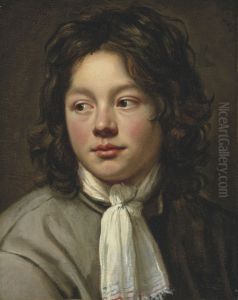Michaelina Wautier Paintings
Michaelina Wautier was a Baroque-era painter from the Southern Netherlands. Despite the significant challenges faced by women in the arts during the 17th century, Wautier succeeded in creating a body of work that was both diverse and innovative for its time. She was born in June 1604 in Mons, which is now in modern-day Belgium, and her life spanned much of the 17th century, a period that witnessed the flourishing of Baroque art.
Wautier's work was largely forgotten until recent years when art historians began to rediscover and re-evaluate the contributions of female artists to the history of art. Little is known about Wautier's early life, including her artistic training, but it is evident from her works that she was highly skilled and well-versed in the artistic conventions of her time. Unlike many of her female contemporaries who were often restricted to painting still lifes, portraits, or miniatures, Wautier was notable for her ambitious subject matter, including large-scale historical and mythological scenes.
Her most famous painting, 'The Triumph of Bacchus', which currently resides in the Kunsthistorisches Museum in Vienna, showcases her ability to handle complex compositions with multiple figures. This painting, along with others, demonstrates that she had access to male models, which was highly unusual for a female artist at that time. Despite the traditional limitations imposed on women, she painted both male and female nudes, religious subjects, and genre scenes with equal skill.
Wautier lived and worked in Brussels for most of her life, alongside her brother Charles Wautier, who was also a painter. Her works were sometimes mistakenly attributed to her brother or other artists, which contributed to her obscurity. It was not until the late 20th and early 21st centuries that her work was properly attributed and began to receive scholarly attention.
Sadly, Michaelina Wautier's death in 1689 marked the end of her life, but her legacy has only grown in recent years as more of her paintings have been identified and her talent as a Baroque artist has been more widely recognized. Today, she is celebrated as one of the few women of her time who managed to break through the gender barriers of the art world and achieve recognition for her remarkable contributions to the Baroque period.

